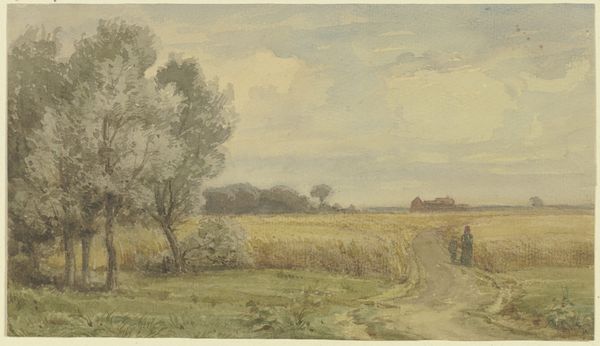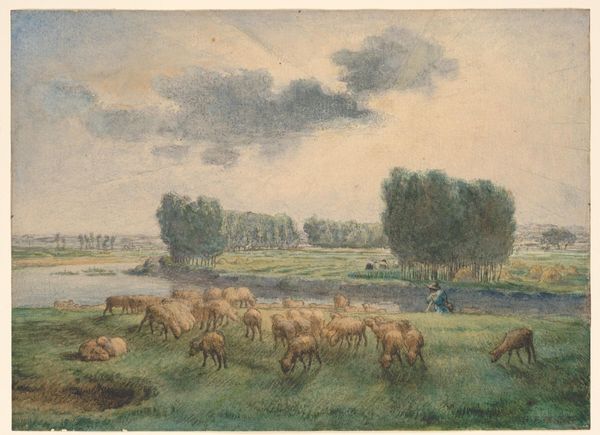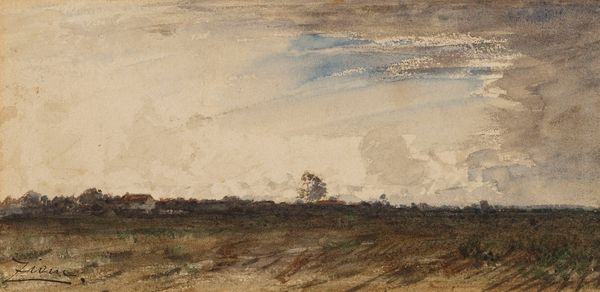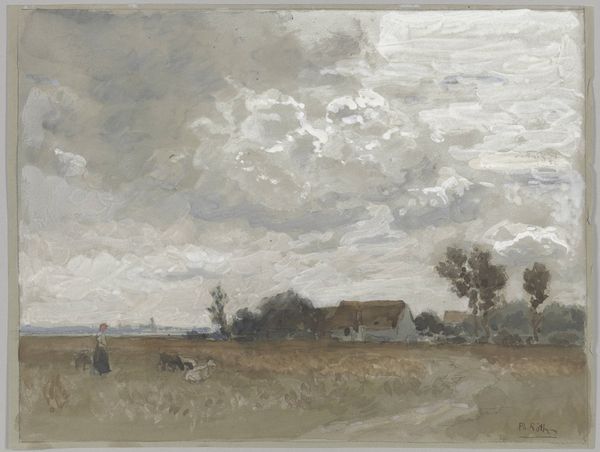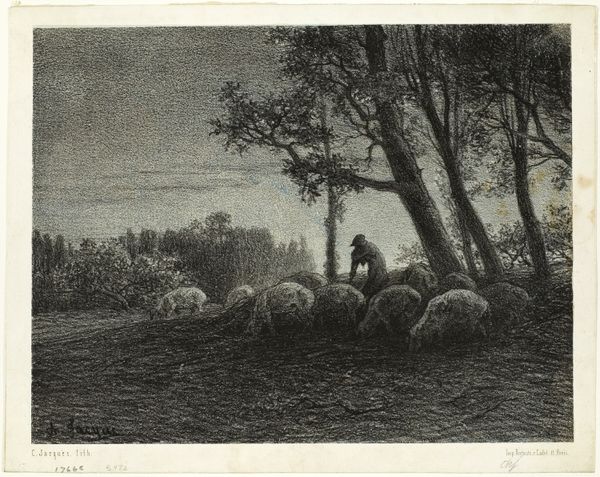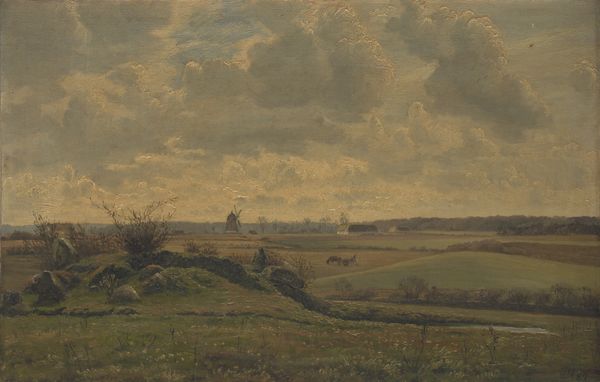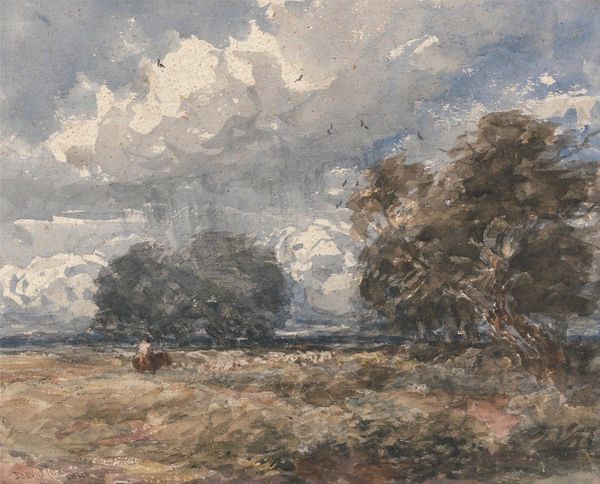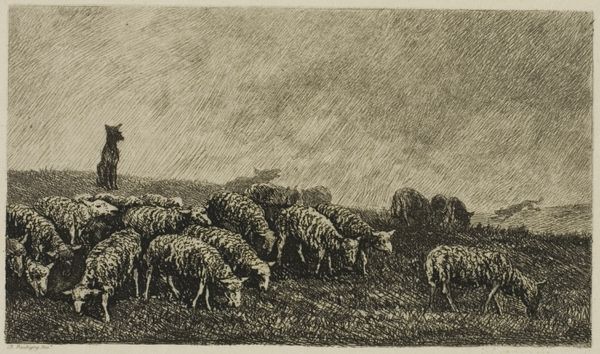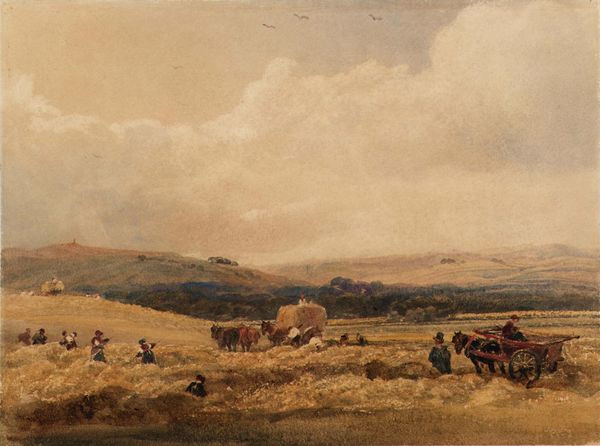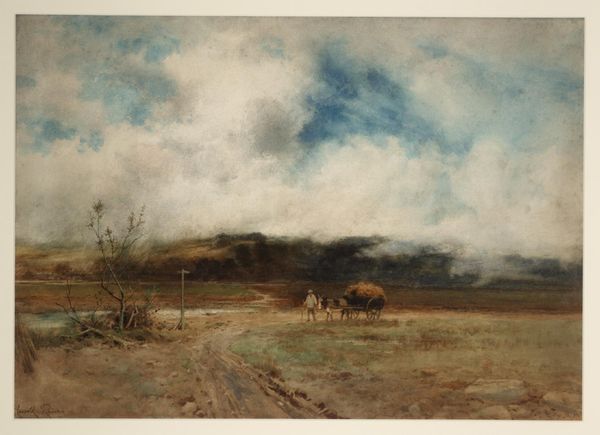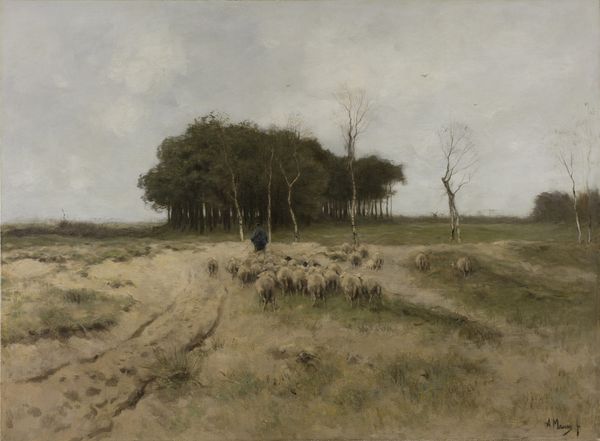
watercolor
#
16_19th-century
#
landscape
#
watercolor
#
coloured pencil
#
genre-painting
#
realism
Dimensions: height 132 mm, width 236 mm
Copyright: Rijks Museum: Open Domain
Curator: Welcome. We're looking at "Landscape with a Flock of Sheep" by Cornelis Willem Hoevenaar, made sometime between 1857 and 1884. It's a watercolor piece. Editor: It’s a somber piece. Overcast, muted tones... the huddled sheep feel almost melancholic. There's something about the weight of that sky bearing down that affects me. Curator: Exactly! Hoevenaar's manipulation of watercolor here speaks volumes. Note the diluted washes used for the sky, contrasted against the denser applications depicting the foliage and sheep. The very application implies labor, choices made in the studio that have social resonance. Watercolor, so often considered "delicate", is put to use representing an aspect of agricultural labor. Editor: It’s important to consider the context of 19th-century rural life. These landscapes weren't just idyllic scenes; they were reflections of agricultural shifts, land ownership, and the lived realities of working-class communities, including animal husbandry and land tilling. The sky feels especially burdened, thinking about the socio-economic struggles happening then. Curator: True, the composition supports this reading. The broad expanse of sky overshadows the modest flock, a visual metaphor perhaps. Look, too, at the materiality— the texture achieved through layered washes mimics the natural undulations of the landscape. This would've required an intimate understanding of both the medium and the subject matter. Editor: And the almost facelessness of the sheep reinforces a sense of anonymity and perhaps speaks to their role as a commodity, blurring their individual existence, echoing contemporary debates about animal rights, welfare, and objectification of vulnerable beings. Curator: I'd also point to the "genre-painting" aspect here – how it fits within a broader trend. It showcases a fascination with capturing everyday scenes, domestic life, and natural landscapes as subject matter, suggesting there was value in illustrating simple rural industry, a connection back to nature's fundamental cycles. Editor: I appreciate how you’ve pinpointed the production of the art object, reminding us that this landscape isn’t just a passive reflection of scenery; instead, its visual elements encourage active investigation. And considering these things pushes it past a picturesque moment to something deeply relational. Curator: For me, looking closer helps understand 19th-century painting practices and the means through which everyday life becomes material for fine art. Editor: Seeing it as part of socio-historical dynamics underscores its continuing ability to incite vital discussions today.
Comments
No comments
Be the first to comment and join the conversation on the ultimate creative platform.
